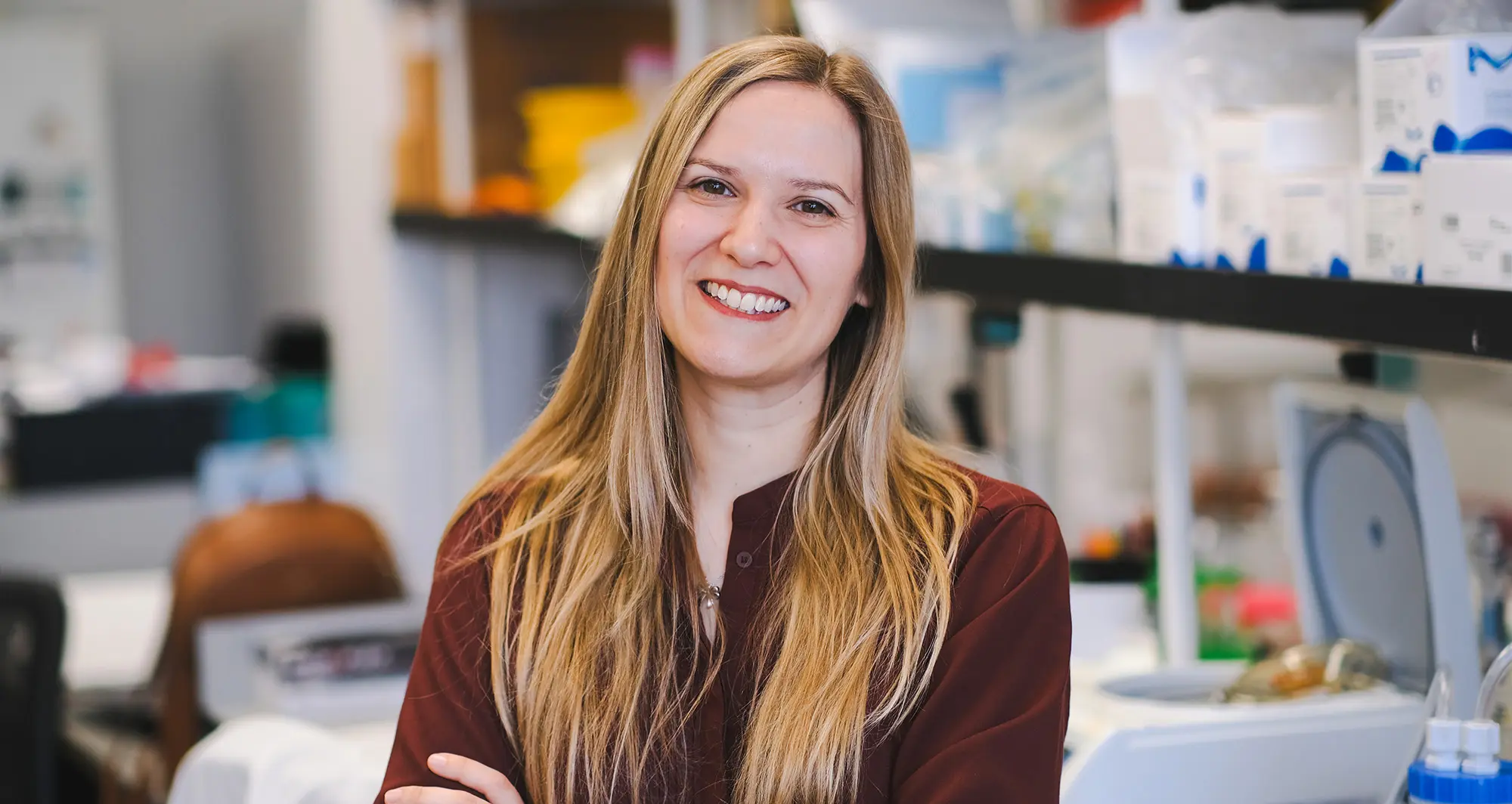Postdoc Profiles
Ambroise Edouard Manceau, PhD
Meet one of our early-career scientists: Ambroise Edouard Manceau, PhD, a postdoctoral researcher in the lab of Cosimo Commisso, PhD. Manceau studies pancreatic ductal adenocarcinoma — the most common form of pancreatic cancer with only a 13% five-year survival rate.

Dana Mamriev, PhD
Meet one of our early-career scientists: Dana Mamriev, PhD, a postdoctoral researcher in the lab of Maximiliano D’Angelo, PhD. Mamriev studies the gateway between the DNA stored in the cell’s nucleus and the rest of the cell to better understand how changes in this junction contribute to cancer development.
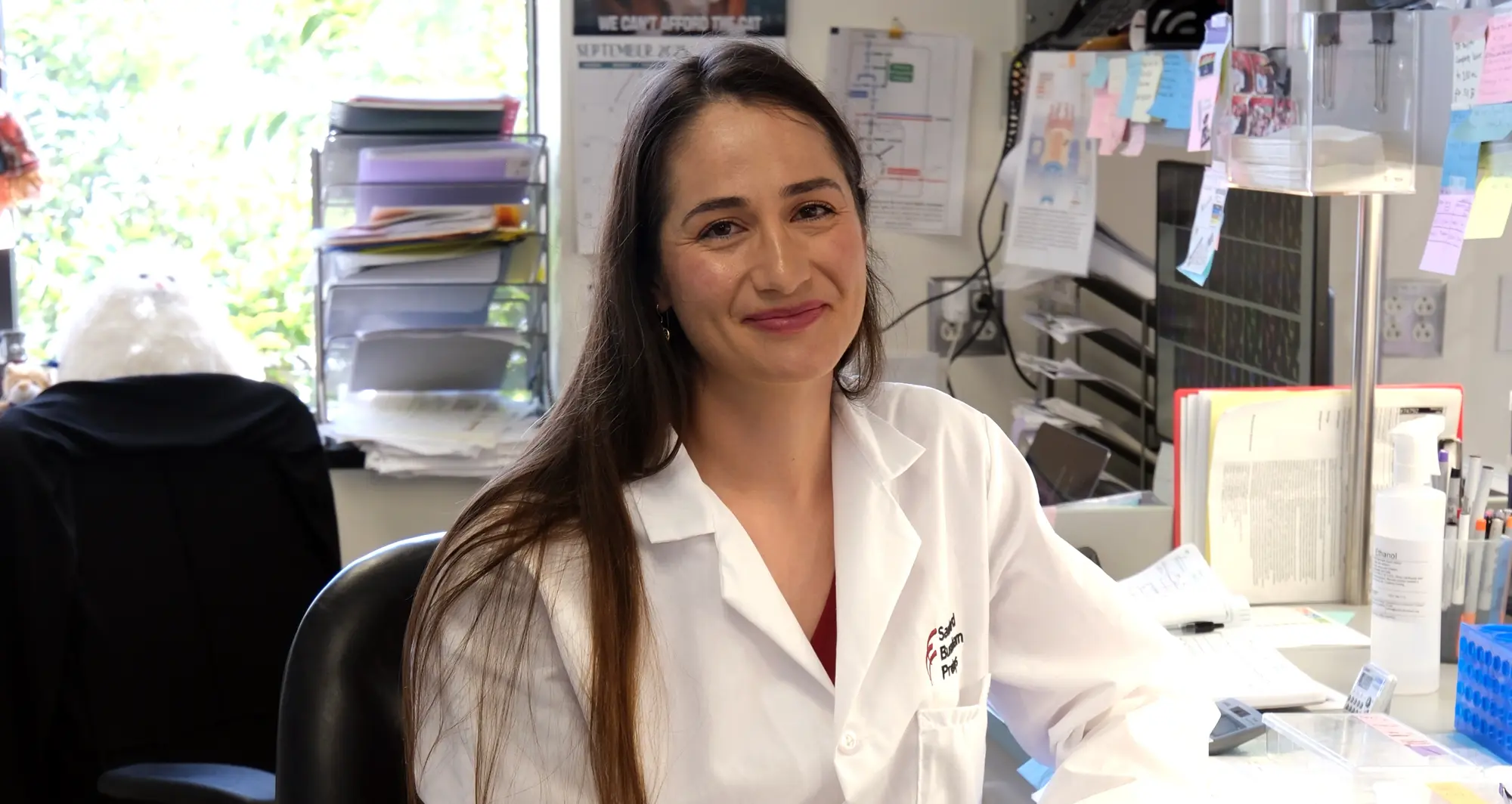
Alexandra Houser, PhD
Meet one of our early-career scientists at Sanford Burnham Prebys: Alexandra Houser, PhD, a postdoctoral researcher in the lab of Shengjie Feng, PhD. Houser is a structural biologist studying ion channels to better understand how the brain works.
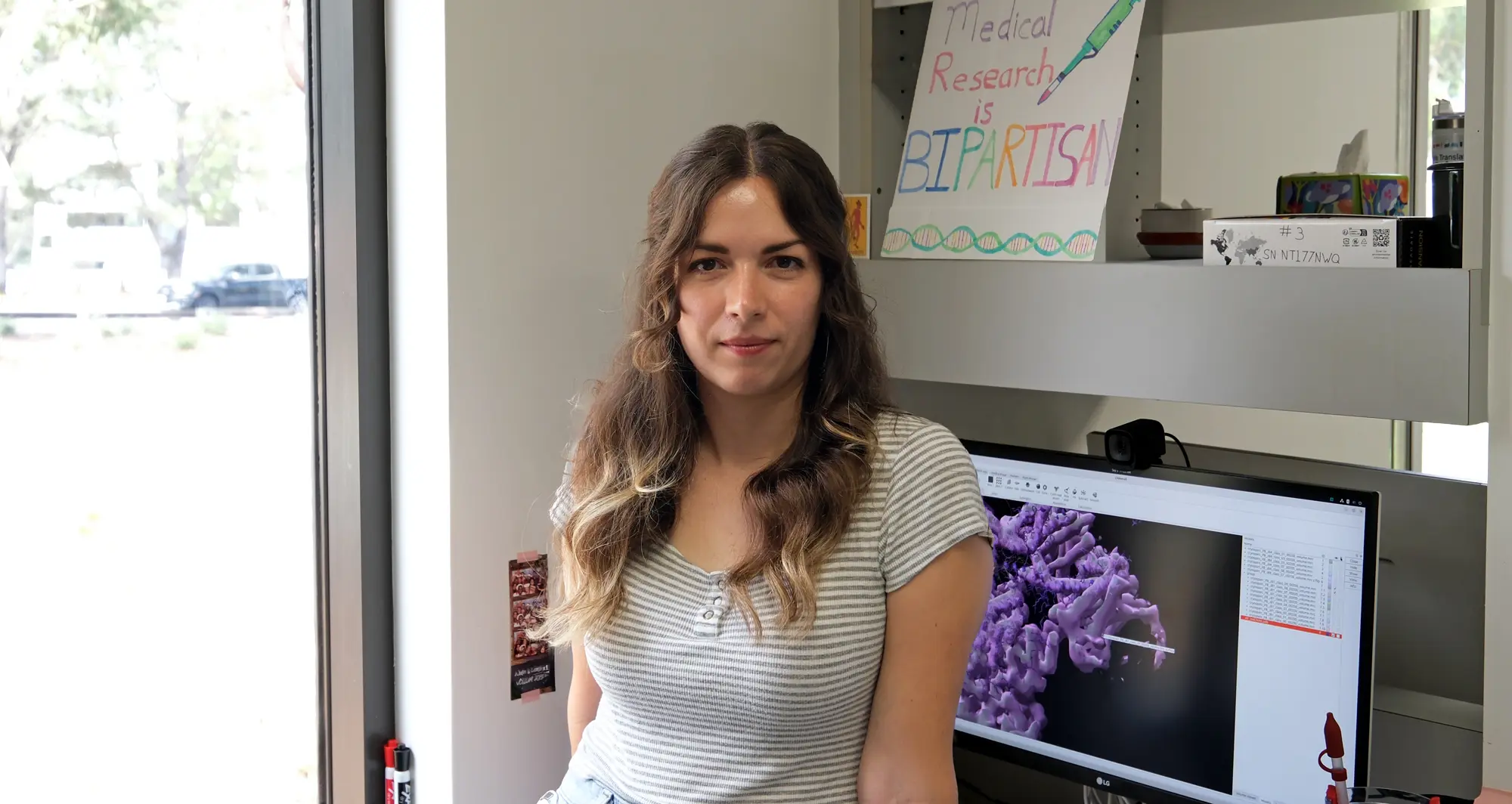
Rouven Arnold, PhD
Meet one of our early-career scientists at Sanford Burnham Prebys Medical Discovery Institute: Rouven Arnold, PhD, a postdoctoral researcher in the lab of Peter Adams, PhD. Rouven is a geneticist studying how aging affects the identity of individual cells. His goal is to protect people from common age-related diseases such as heart disease, cancer and dementia.
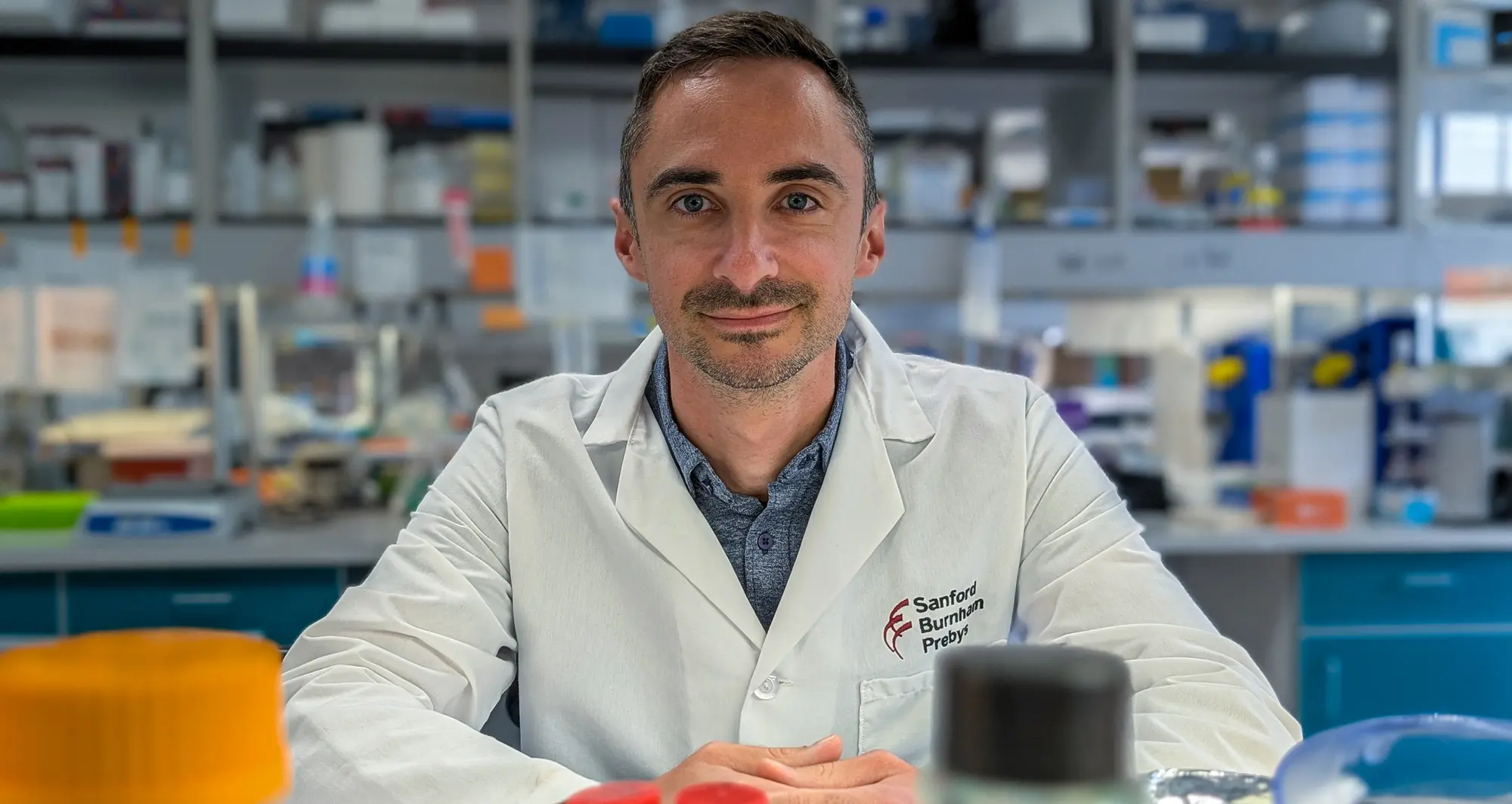
Tsunghan Hsieh, PhD
Meet one of our early-career scientists at Sanford Burnham Prebys: Tsunghan Hsieh, PhD, a postdoctoral researcher in the lab of Xiao Tian, PhD. Hsieh studies stem cell biology and regenerative medicine to learn how to protect brain health during aging.
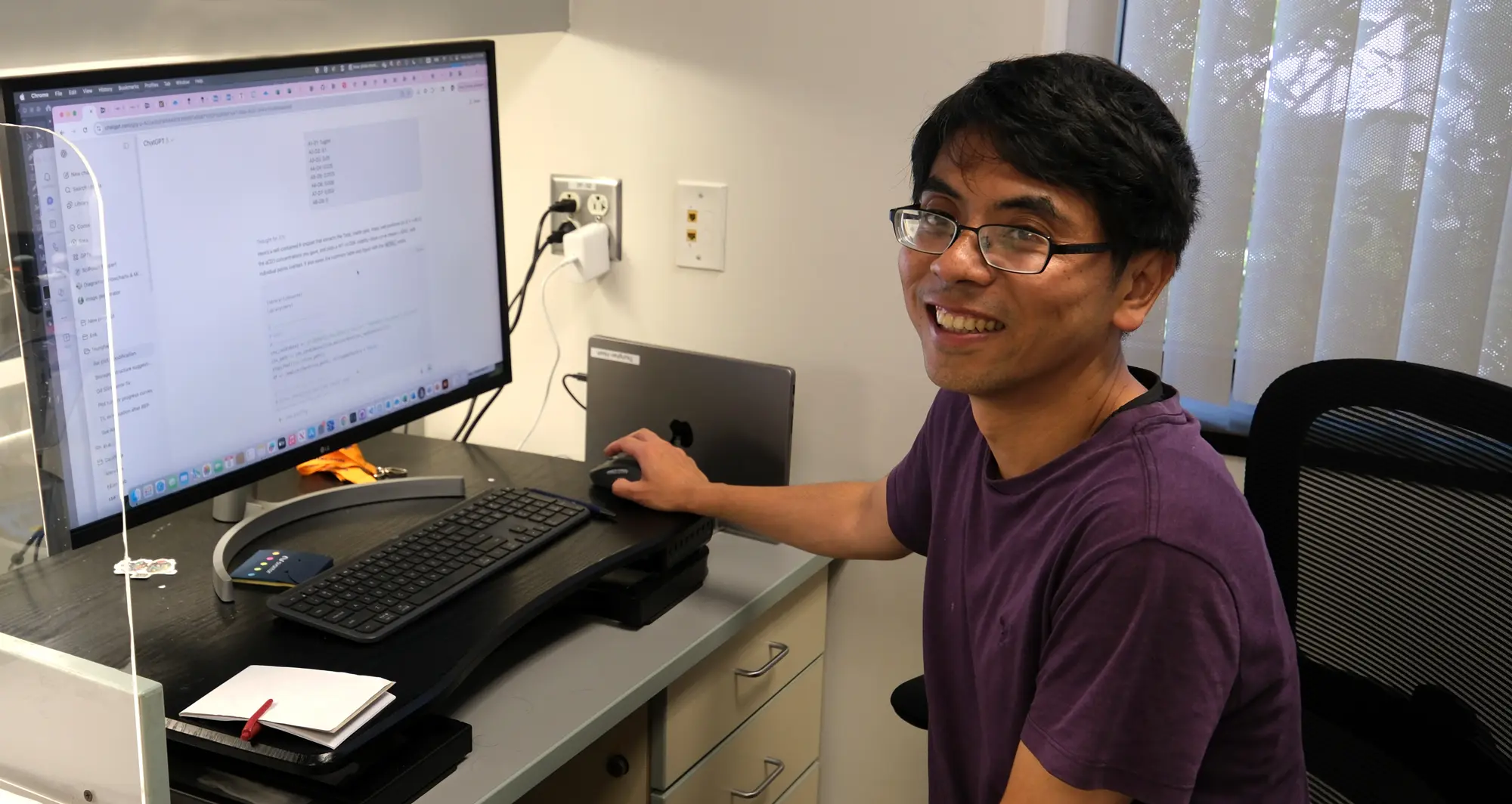
Arailym Sarsembayeva, PhD
Meet one of our early-career scientists at Sanford Burnham Prebys: Arailym Sarsembayeva, PhD, a postdoctoral researcher in the lab of Eric Wang, PhD, focuses on Helios, a transcription factor highly expressed in regulatory T cells and exhausted CD8+ T cells.
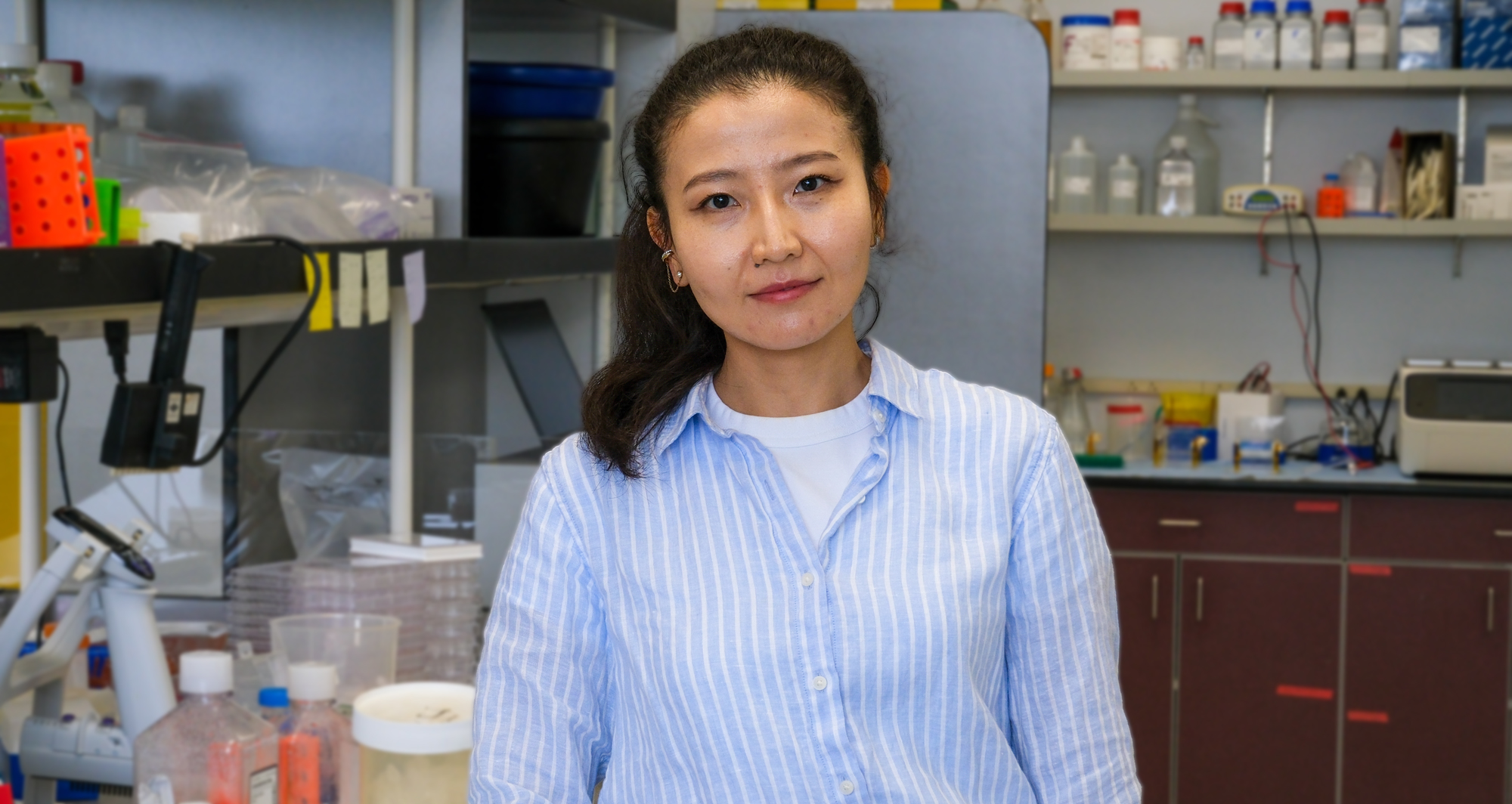
Theophilos Tzaridis, MD
Recipient of the Cynthia Schwartz Shenkman Research Excellence Fishman Award, Theophilos Tzaridis of Peter Adams’ lab discusses his work on pediatric brain tumors, why rigorous preclinical science matters, and how donor support accelerates discoveries.
Established in 2024, the Cynthia Schwartz Shenkman Research Excellence Fishman Award is unique in nature because it recognizes a Sanford Burnham Prebys postdoc for their outstanding biomedical research contributions and demonstrated track record of research excellence.
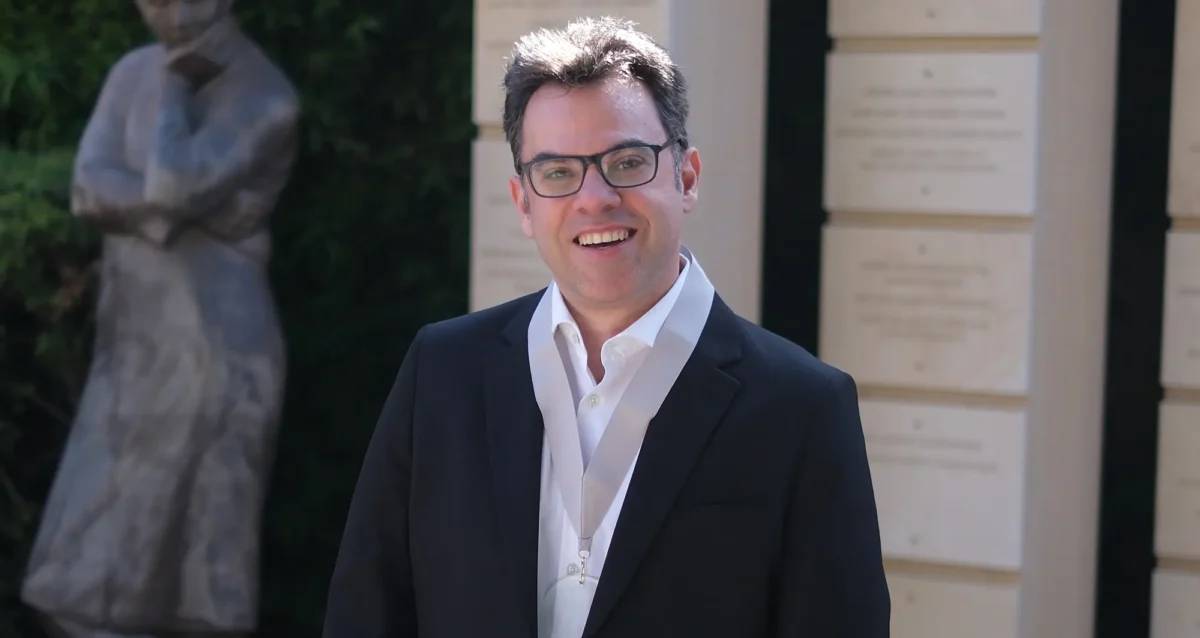
Alicia Llorente Lope, PhD
Shining a light on the people behind the science: Alicia Llorente Lope, PhD, is focusing on breast cancer; the most common cancer in women worldwide. In Brooke Emerling’s lab at Sanford Burnham Prebys, Alicia studies a specific and aggressive subtype of breast cancer: HER2.
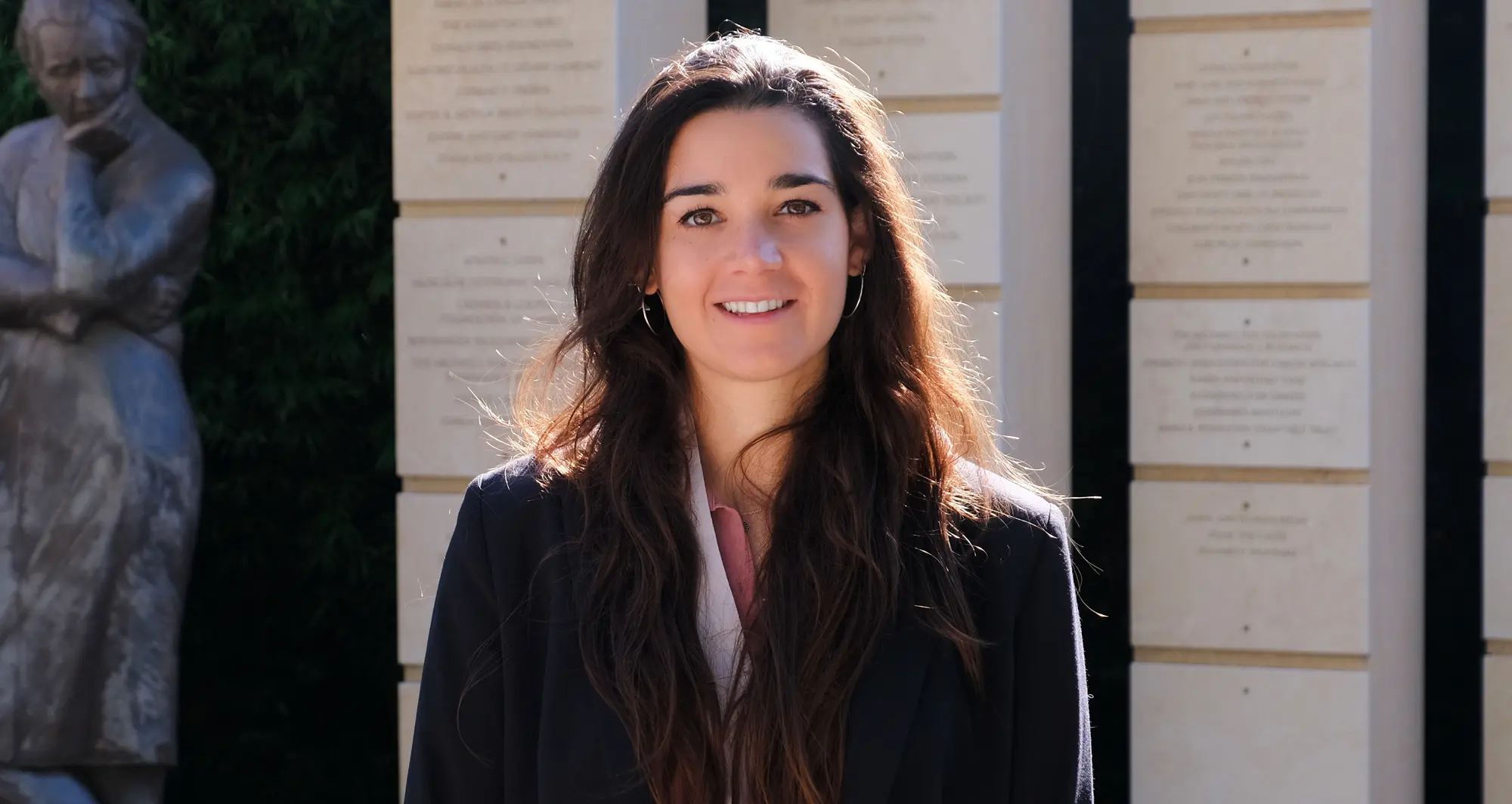
Kelly Li, PhD
Blending a love of biology with the power of data science, Kelly Li, PhD, is tackling one of life’s biggest mysteries: aging. In Yuk-Lap (Kevin) Yip’s lab at Sanford Burnham Prebys, Kelly studies how aging cells influence disease, teaming up with collaborators to explore promising new therapeutic approaches.
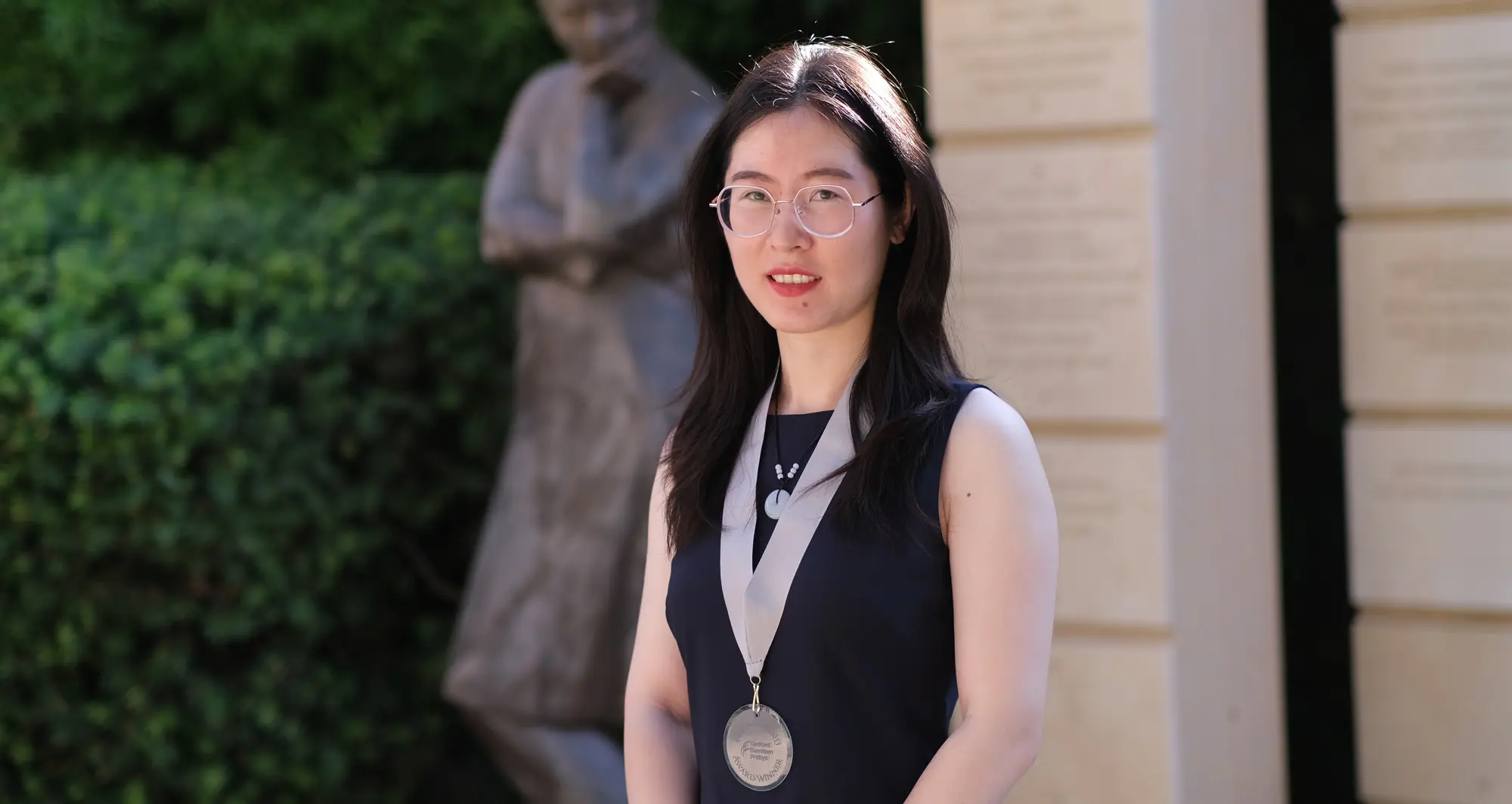
Huijie Huang, PhD
Shining a light on the people behind the science: Huijie Huang, PhD, is a postdoc working to understand the causes of Alzheimer’s disease.
At Sanford Burnham Prebys, postdoctoral researcher Huijie Huang, PhD, is working in the lab of Timothy Huang, PhD, on a mission to understand the root causes of Alzheimer’s disease. She’s tackling one of the most urgent challenges in aging research.
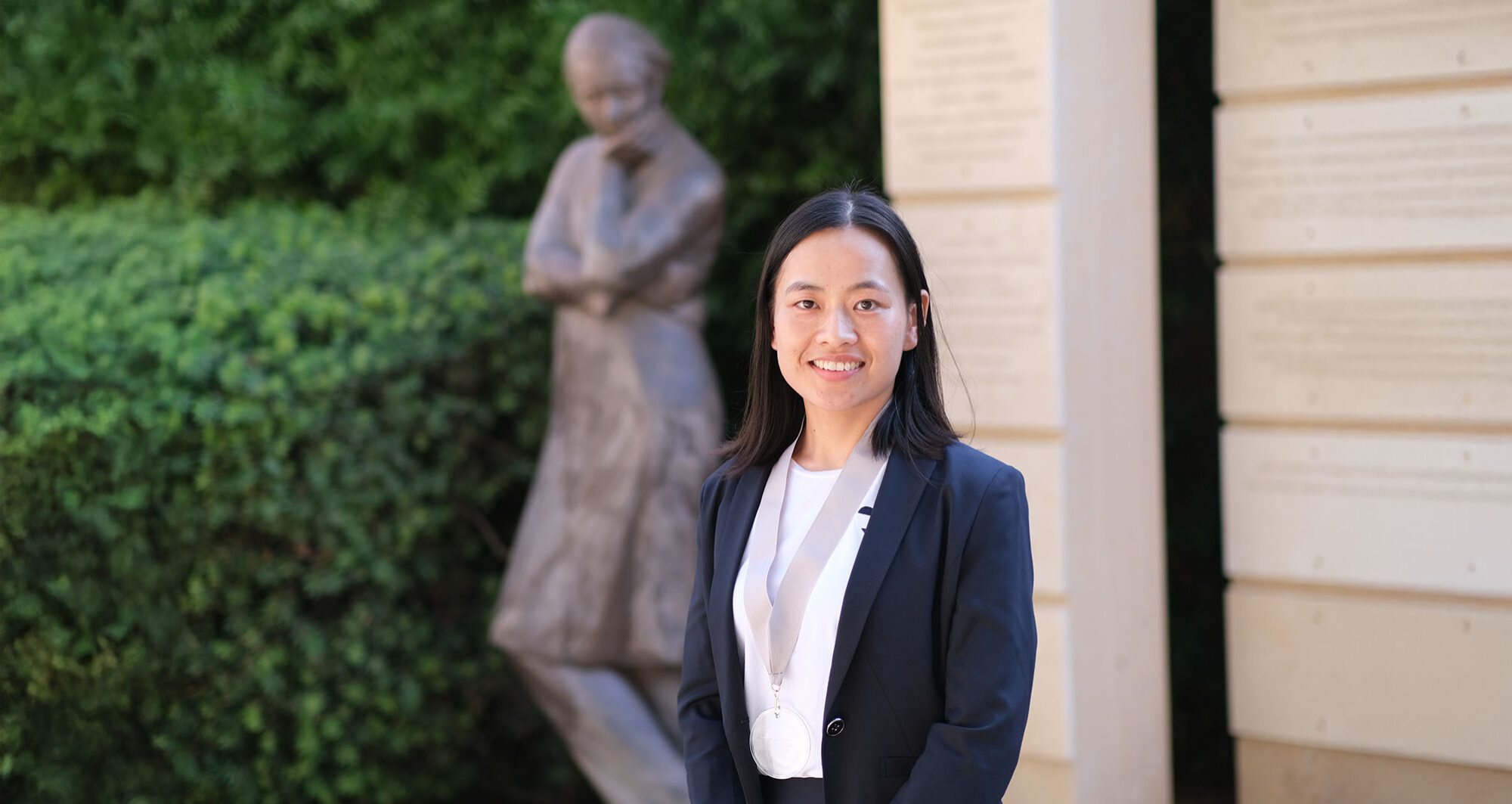
Meenakshi Sudhakaran, PhD
Meet Meena Sudhakaran, PhD—bringing bold ideas to breast cancer research.
As a postdoc in Kelly Kersten’s lab at Sanford Burnham Prebys, Meena is diving deep into cancer immunology to help make immunotherapy more effective for breast cancer patients.
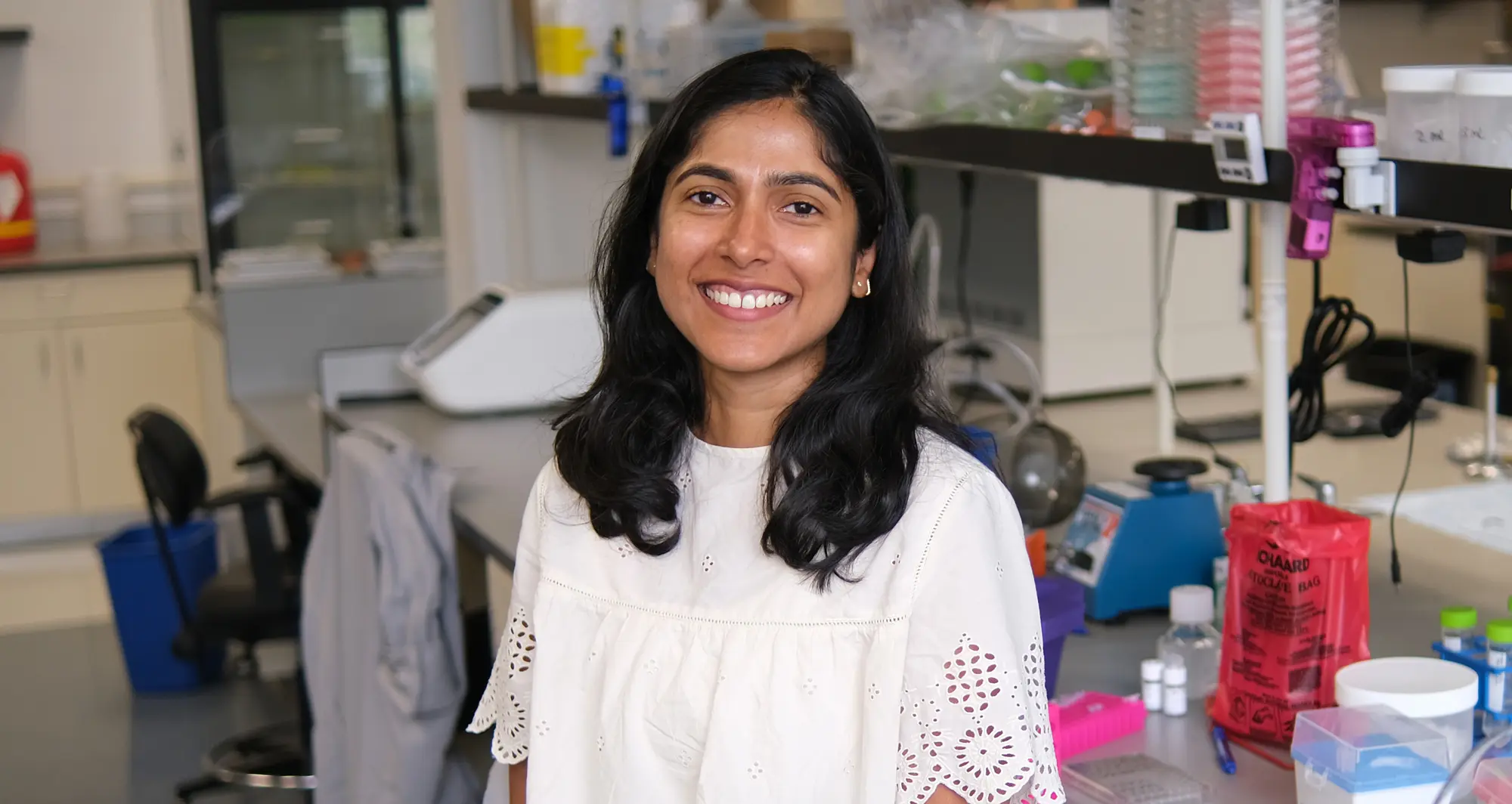
Ranajit Das, PhD
Meet one of our early-career scientists at Sanford Burnham Prebys: Ranajit Das, PhD, a postdoctoral researcher in the lab of Nicholas Cosford, PhD. Das is a medicinal chemist focused on designing and synthesizing new potential therapies, with a focus on cancer treatment.
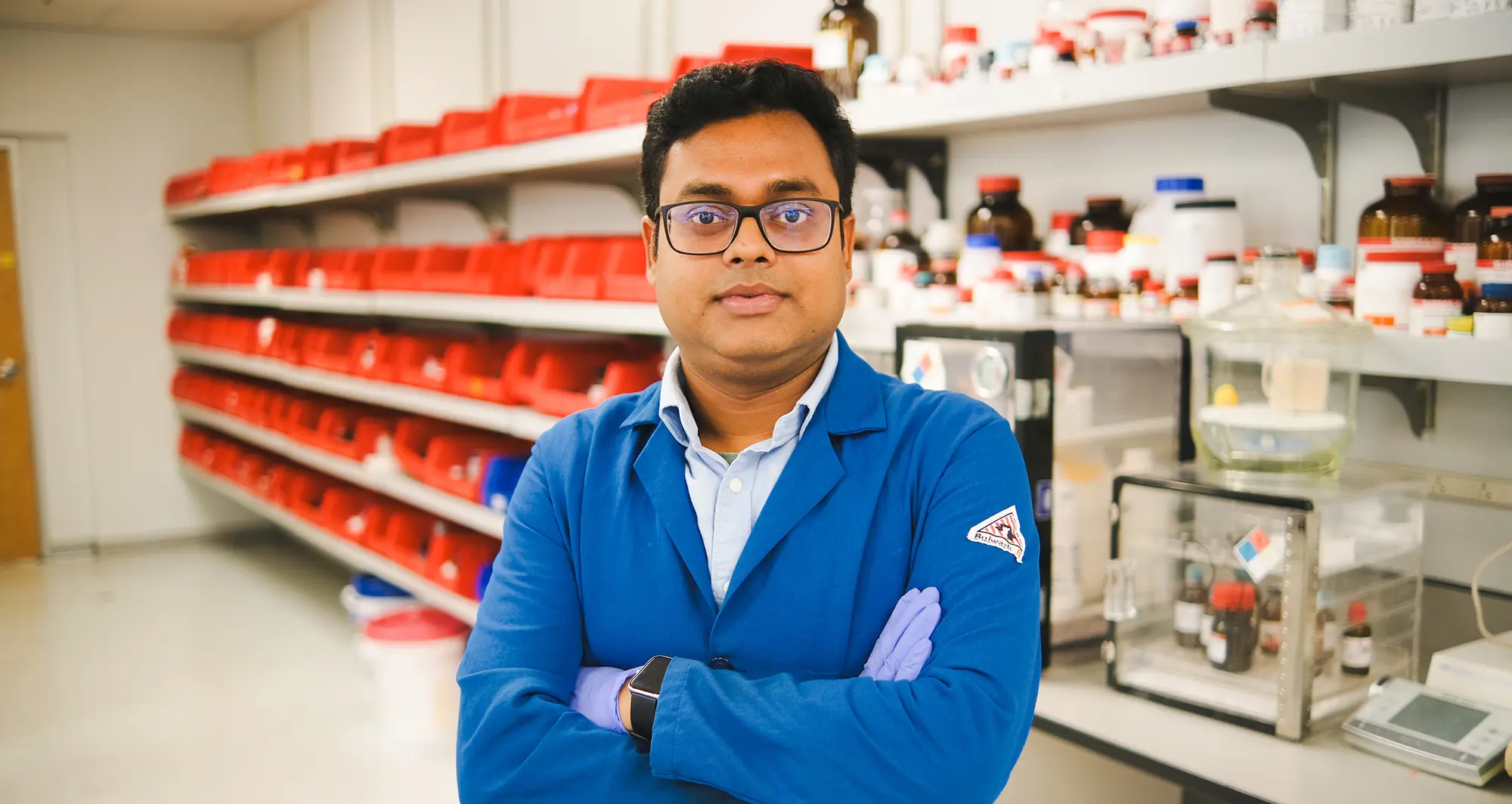
Sara Ancel, PhD
Shaping the future of science at Sanford Burnham Prebys: Sara Ancel, PhD, a postdoctoral researcher in the lab of Will Wang, PhD, who draws on a background in engineering and stem cell biology to explore tissue remodeling and disease mechanisms through cutting-edge spatial omics approaches. Originally from Switzerland, she brings together cutting-edge technology and collaborative science to push boundaries—and inspire the next generation of researchers.
